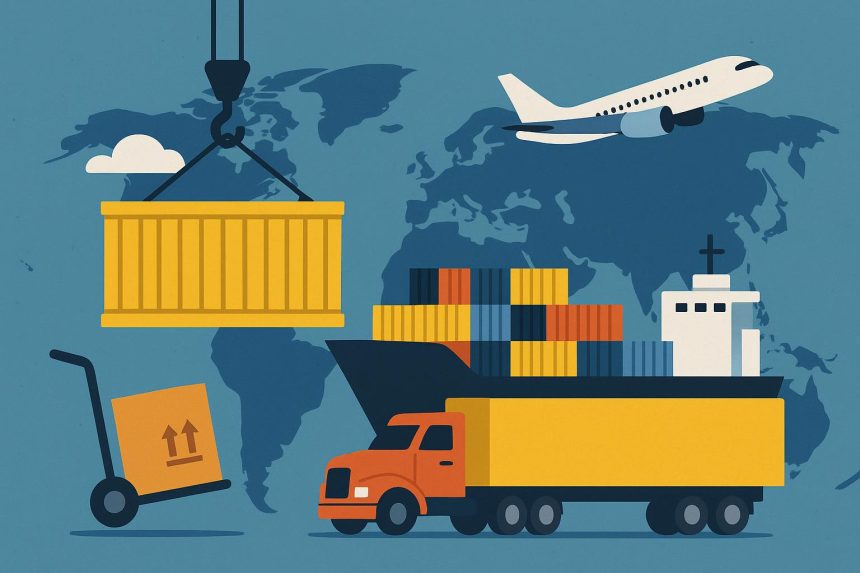Navigating the world of freight and logistics can feel like learning a new language. But for any business owner who ships products, connects supply chains, or sources internationally, mastering a few core terms is essential — not just for clarity today, but to stay ahead in the future of freight management.
In this post, we’ll unpack the freight vocabulary that matters most, help you avoid costly miscommunications, and ensure you speak fluently when negotiating with carriers, freight forwarders, or global partners.
Shipper / Consignor & Consignee
Shipper / Consignor: the party that sends the goods — the one who arranges or pays for transportation (depending on the contract).
Consignee: the party who receives the goods at the destination.
Getting these definitions straight is critical, because many responsibilities (customs, liability, risk) hinge on who the “shipper” or “consignee” is under a contract.
Carrier & Freight Forwarder
Carrier: the company or entity that physically transports goods (by road, rail, sea, air) from one location to another.
Freight Forwarder: an intermediary who organises the transportation, consolidations, documentation, customs, insurance, and the coordination between different carriers (especially in international or multimodal shipping).
Especially for small to medium enterprises, using a freight forwarder can reduce complexity, but you still need to understand who handles what.
Incoterms & Delivery Terms
When you buy or sell goods across borders (or even domestically), you’ll encounter Incoterms — standard three‑letter commercial rules that define who is responsible for costs, transport, risk, and customs at various stages.
Some key examples include:
– EXW (Ex Works): Seller makes goods available at their premises. Buyer handles transport, loading, export, etc.
– FOB (Free On Board): Seller loads onto the vessel; risk transfers to buyer once goods are on board the ship.
– CIF / CFR: Seller covers cost and freight (and in CIF also insurance) to port of destination; risk transfers earlier.
– DAP / DDP: Delivered At Place / Delivered Duty Paid: seller delivers goods to buyer’s location (DDP even includes paying duties).
Choosing the right Incoterm can dramatically affect your costs and liabilities.
Full Container Load (FCL) / Less‑than‑Container Load (LCL)
FCL (Full Container Load): your goods fill an entire container (or you hire an entire container). The container moves intact from origin to destination.
LCL (Less‑than‑Container Load): your goods share container space with other shippers. Economical when you have smaller shipments, though potentially slower or more complex due to consolidation/deconsolidation.
Dimensional Weight / Volumetric Weight
Shipping cost is not always based on actual weight. Many carriers use dimensional weight (sometimes called volumetric weight) — a calculation based on the volume of your package relative to its weight. The carrier will charge by whichever is higher: actual or dimensional weight. That’s why packaging optimisation matters — lighter, more compact packing can reduce freight charges.
Accessorial Charges & Surcharges
These are extra fees beyond your base freight cost, typically for non‑standard services or conditions. Some examples include:
– Accessorial Charges: liftgate, inside delivery, sorting, palletising, special handling.
– Surcharges: fuel surcharges, remote area delivery fees, peak season costs.
These costs can add up, and if you don’t anticipate them, your landed cost could be much higher than expected.
Demurrage & Detention
Demurrage: fees charged when a container stays in the port or terminal beyond the allowed “free time.”
Detention: fees for keeping the container outside the terminal beyond the allowed time.
In practice, you’ll want to manage your logistics tightly to avoid these additional costs.
Bill of Lading (B/L) & Other Key Documents
Bill of Lading (B/L or BoL): a pivotal document issued by the carrier, serving as a receipt of goods, a contract of carriage, and (in many cases) a document of title.
Commercial Invoice: shows the value, description, quantities, and terms of sale. Used for customs clearance.
Certificate of Origin: confirms where the goods were manufactured, which can affect duties and trade agreements.
Customs Declaration / Export Declaration: documents your goods for export (or import), and satisfies compliance requirements.
Cargo Manifest: a detailed manifest or list of all cargo and shipments on a vessel or transport leg.
Having accurate documentation is non-negotiable — errors or missing documents lead to delays, fines or even shipment rejection.
Freight Classification / HS Codes
Freight (or Cargo) Classification: grouping goods according to weight, density, handling, liability, risk, etc. This affects how carriers price and handle your shipment.
HS Code (Harmonised System Code): a globally standardised system to classify goods for customs. Every internationally traded product is assigned an HS Code; it determines tariffs, restrictions, and reporting.
It’s crucial that you or your freight partner use the correct HS Code — misclassification can trigger audits, delays or penalties.
Chain of Responsibility (Australia‑specific)
In the Australian transport system, the concept of Chain of Responsibility places legal liability on all parties in the supply chain (not just drivers) for breaches of transport law. This means shippers, packers, consignees, freight forwarders, and others may share responsibility for misuse, overloading, inadequate restraint, or handling violations.
As a business owner, you must be aware: if your product presentation, packaging, or instructions contribute to a breach, your company could be held liable.
Putting It All Together: Why These Terms Matter
Understanding these key terms is more than just jargon — it enables you to:
- Negotiate smarter — when you know what each party’s obligations are, you won’t be surprised by hidden costs.
- Mitigate risks — clarity around risk transfer, liability and documentation reduces disputes.
- Budget more accurately — with freight classification, surcharges, demurrage and accessorials in view, your landed cost estimates become more reliable.
- Scale with confidence — as your business grows, you’ll be better equipped to engage in international trade, outsource logistics or adopt new freight technologies.
And all this ties into the future of freight management — where automation, AI, blockchain, digital visibility, and smarter supply‑chain orchestration are reshaping how freight is handled. By mastering this vocabulary now, your business will be well positioned to adopt advances in freight tech as they emerge.
Lynn Martelli is an editor at Readability. She received her MFA in Creative Writing from Antioch University and has worked as an editor for over 10 years. Lynn has edited a wide variety of books, including fiction, non-fiction, memoirs, and more. In her free time, Lynn enjoys reading, writing, and spending time with her family and friends.















